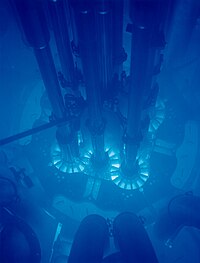
Photo from wikipedia
Smith-Purcell radiation (SPR) refers to the far-field, strong, spike radiation generated by the interaction of the evanescent Coulomb field of the moving charged particles and the surrounding medium. In applying… Click to show full abstract
Smith-Purcell radiation (SPR) refers to the far-field, strong, spike radiation generated by the interaction of the evanescent Coulomb field of the moving charged particles and the surrounding medium. In applying SPR for particle detection and nanoscale on-chip light sources, wavelength tunability is desired. Here we report on tunable SPR achieved by moving an electron beam parallel to a two-dimensional (2D) metallic nanodisk array. By in-plane rotating the nanodisk array, the emission spectrum of the SPR splits into two peaks, with the shorter-wavelength peak blueshifted and the longer-wavelength one redshifted by increasing the tuning angle. This effect originates from the fact that the electrons fly effectively over a one-dimensional (1D) quasicrystal projected from the surrounding 2D lattice, and the wavelength of SPR is modulated by quasiperiodic characteristic lengths. The experimental data are in agreement with the simulated ones. We suggest that this tunable radiation provides free-electron-driven tunable multiple photon sources at the nanoscale.
Journal Title: Optics letters
Year Published: 2023
Link to full text (if available)
Share on Social Media: Sign Up to like & get
recommendations!